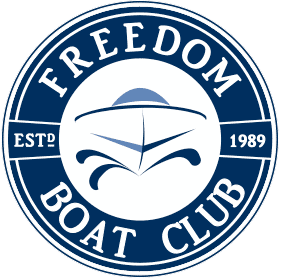Introduction
When you’re out on the water in areas like Houston and Clear Lake, staying safe and knowing your surroundings is key. Boating isn’t just about enjoying great weather and stunning views; it’s about feeling confident that you’re always on the correct path. That’s where GPS and other navigation tools come into play. These tools don’t just guide you to your destination; they offer real peace of mind by helping you navigate safely and efficiently.
Imagine cruising along Clear Lake without worrying about getting lost. With the right navigation tools on your boat, you’re free to relax, knowing these tools will handle the tricky parts. They are like an extra set of eyes, keeping track of your position and direction, so all you need to do is enjoy the ride. Let’s explore how GPS and other navigation tools can transform your boating experience into one that’s both safe and stress-free.
Understanding GPS Technology
Global Positioning System, or GPS, is a technology many of us use daily without even thinking about it. But when it comes to boating, understanding GPS technology is crucial. GPS works by using satellites orbiting the Earth to provide location and time information to anyone, anywhere, with a GPS receiver. This precise data is especially useful for boaters who need to know their exact location on vast, open waters.
GPS helps in more ways than one. Here’s how it plays a role in modern boating:
– Accurate Location Tracking: Knowing exactly where you are is the foremost benefit of GPS. On a large lake or open sea, landmarks aren’t much help, and GPS fills that gap.
– Route Planning: GPS allows boaters to set waypoints and plan routes. You no longer have to depend solely on visual cues or paper charts.
– Safety: In case of emergency, GPS can be a lifesaver, helping rescuers locate you faster.
– Weather Updates: Some GPS systems are integrated with weather data, so you can avoid hazardous conditions by keeping an eye on real-time updates.
GPS technology in boating isn’t just for the experts. It’s simple to use and offers a range of benefits, making it an indispensable tool for newbies and seasoned sailors alike. By leveraging GPS, your time on the water becomes not only an adventure but also a safer, more predictable experience.
Essential Navigation Tools for Boaters
Besides GPS, boaters should be familiar with a range of navigation tools to enhance their experience on water. Each tool serves its own unique purpose, ensuring safety and precision during your boating adventures. Let’s discuss some of these key tools:
– Marine Charts: These are detailed maps of bodies of water, showing depth, underwater hazards, and safe harbors. Using marine charts helps in planning a route more effectively, especially in unfamiliar waters.
– Compasses: A compass is old-school, but it’s reliable. It shows your direction relative to the earth’s magnetic poles and serves as a critical backup when electronics fail.
– Sonar: This tool uses sound waves to detect solid bodies underwater, alerting boaters to any potential underwater hazards below the surface. It’s invaluable when navigating shallow or rocky waters.
By using these tools along with GPS, you add layers of security and information, helping to ensure your trip remains smooth and trouble-free. Being equipped with multiple navigation aids means you’ll be better prepared for any surprises the water might throw at you.
Tips for Using GPS and Navigation Tools
To make the most of your navigation tools, it’s crucial to know how to set them up and use them effectively. Here are a few steps to ensure you’re getting the best out of your GPS and navigation gear:
1. Set Your GPS Correctly: Before you set sail, make sure your GPS is up to date with current maps and charts. Enter waypoints for your planned route in advance so you have a clear path to follow.
2. Regularly Check Your Compass: Make a habit of checking your compass periodically, ensuring it aligns accurately with your GPS. This cross-verification can provide a backup if one fails.
3. Integrate Tools for Maximum Safety: Use sonar in conjunction with GPS to avoid underwater hazards, especially in waters that are known for shallow areas or submerged rocks.
4. Practice Makes Perfect: Spend some time familiarizing yourself with each tool while your boat is docked. Simulate a navigation challenge to see how quickly you can rely on these tools to guide you.
By following these tips, you ensure that every trip you take on Houston and Clear Lake is well planned and executed, allowing you to enjoy your boating ventures without constantly second-guessing your route or safety.
Wrap-Up Your Trip with Confidence
Using GPS and other navigation tools transforms boating from a potentially uncertain venture into a leisurely excursion. These tools not only guarantee your safety but also grant you the freedom to explore confidently, knowing help is just a signal away. When you’re equipped with knowledge and the right tools, every journey becomes an opportunity for discovery rather than a chore.
The shores of Houston and Clear Lake offer endless possibilities for those eager to explore. Employ these navigation aids to make each trip a memorable and worry-free adventure. Embrace boating fully without the constant shadow of doubt, trusting in your enhanced ability to navigate effectively and safely.
Ready to explore the beautiful waters of Houston and Clear Lake with greater ease and confidence? Join the Freedom Boat Club of Clear Lake for an unparalleled experience as a member. Our boat club membership provides access to a wide variety of expertly equipped boats, perfect for safe and enjoyable adventures. Sign up today and transform your time on the water into exciting journeys without a worry!
